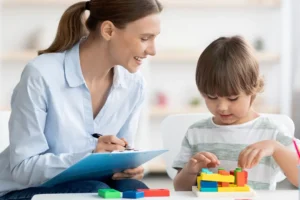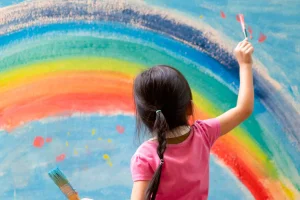Great Drawing Ideas For Your Child
![]()
- Posted by abrakadoodle.com.sg
- Categories Art Education
- Date 17 March 2022
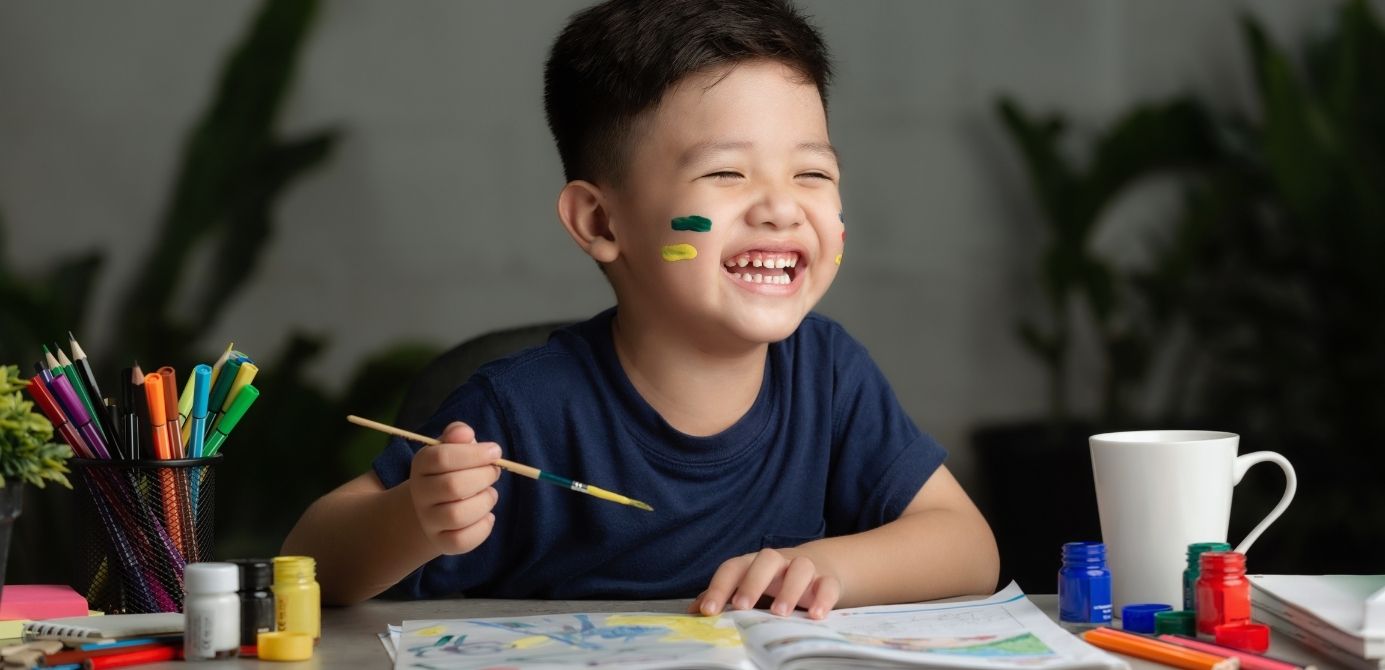
Children discover their world with every passing moment. They encounter the world through the senses and the development of these senses then leads to the formation of mental images. While these senses develop naturally, they can be easily engaged and enhanced.
A baby’s auditory cortex experiences its peak growth period between the last trimester of pregnancy and the first year itself, (from 3 to 12 months). It is strongly recommended that you start speaking to your baby. Engage and interact using a rich language, gently varying the tones and accent. Speak softly, gently music will have a calming effect.
After the baby is born, presenting a wide variety of visual stimuli to babies will be essential, this is because the density of the synapses in the visual system peaks during the child’s 10th month of growth.
Babies are geniuses and have infinite potential. According to one expert, children begin to construct mental images between the ages of one and two years. That is how your child will take her first steps towards understanding and tackling different environments that surround her space.
Table of Contents
ToggleIntroduce drawing early
Engaging and encouraging your child in play even before she is one year old will be a great idea. This plays a big role in stimulating your child’s imagination and creativity. And here is the best part, drawing combines both.
Drawing is a fun, non-messy, involving, colourful, and very liberating activity – your child will take to it as a duck takes to water. Besides, drawing is the backbone of art-making. The more one practises it, the more they can train the eye to see what is really out there. In other words, see with clarity.
Drawing helps train the gross and fine motor skills and ensures the hand is comfortable with using and handling drawing materials. It is easy to start – you can do it anywhere, at any time. No need for a big space or expensive setup — just need the willingness to do it.
Establishing a drawing routine early lays the foundation for a lifelong habit. An excellent way to warm up the brain and hands for any kind of activity or just to relax. Make a few doodles before a test, before bedtime, during dinner… tapping into the subconscious creative brain.
Use blocks to draw
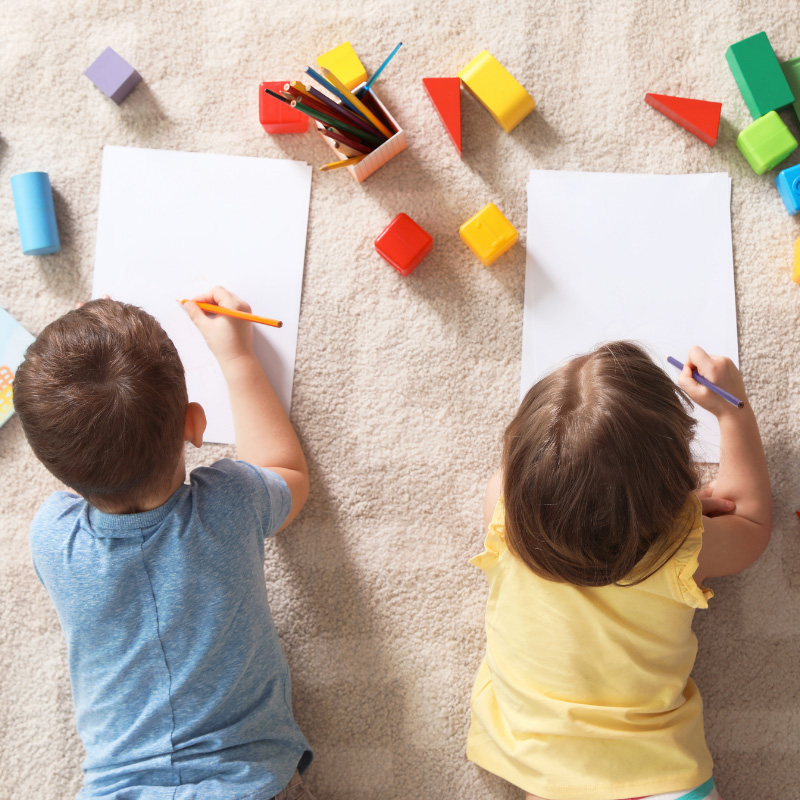
In order to encourage your child to experiment with the way she draws, set up a simple drawing exercise and invite her to draw. This will encourage creativity, understanding of shapes, thinking skills, fine motor coordination and more.
She will start to use shapes of blocks and treat them as an inspiration for real-life objects, such as tracing a circle to make a face! The big benefit of the invitation to start learning to draw is that your child is free to take this activity in any direction she wants.
Experiments have indicated that some children ignore the blocks altogether and start to use colour markers instead. Some try and draw what they see, while others just start to build with the blocks they have. Remember, what you are doing is providing them with a focal point for inspiration, and leaving the rest to them.
Allow your child to draw scribble, doodle, whatever! She needn’t make “something.” It does not have to be a picture at the end either. Avoid asking, “What is it?“, instead say, “What an interesting picture! Can you tell me more about it?” Encouraging your child to think and express clearly.
Experiment and explore drawing
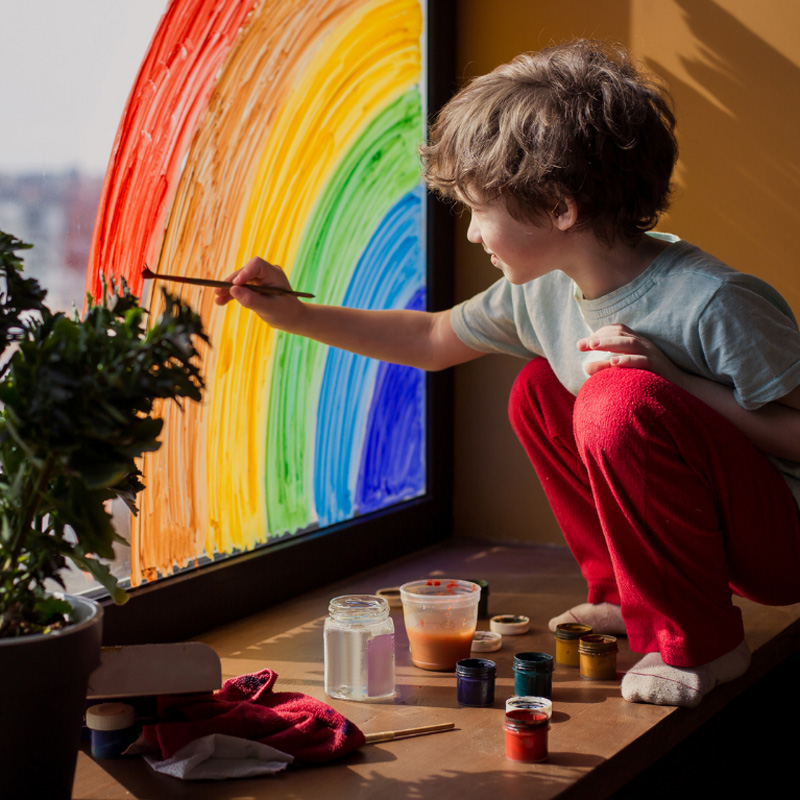
Turn drawing into something that happens in your home on a daily basis. The sense of joy it creates, the feeling of freedom it creates and the skills it helps develop, will give this activity life of its own and a new meaning to being together.
To keep the level of interest high, mix things up and let your child explore a different way of drawing that she may not have thought of yet. For instance, you could bunch three markers of different colours together by using a thick rubber band. But let your child choose the colours first. Get her to bunch it together as well and show how to grip with one hand or use both hands.
Encourage her to think about her colour choices and combinations. Look at the different effects she can create. This exercise will be an effective way to teach your child the process of using rubber bands — looping, pulling, twisting. Strengthening the arms and fingers and improving her gross and fine motor skills.
This will also enable you to challenge your child to come up with a pattern that she can use to decorate an entire Father’s Day card she plans to tuck under her dad’s pillow. You can also speak
to her about what makes a pattern. Change the writing or the drawing paper to see the difference it makes to her design and creativity.
And never forget to listen to your child talking as she goes through with her activity and experience. Her child talk will help you assess where she is at with her learning, knowledge and understanding. This data will help you to develop activities that will match up to her level and interest.
Shadow art
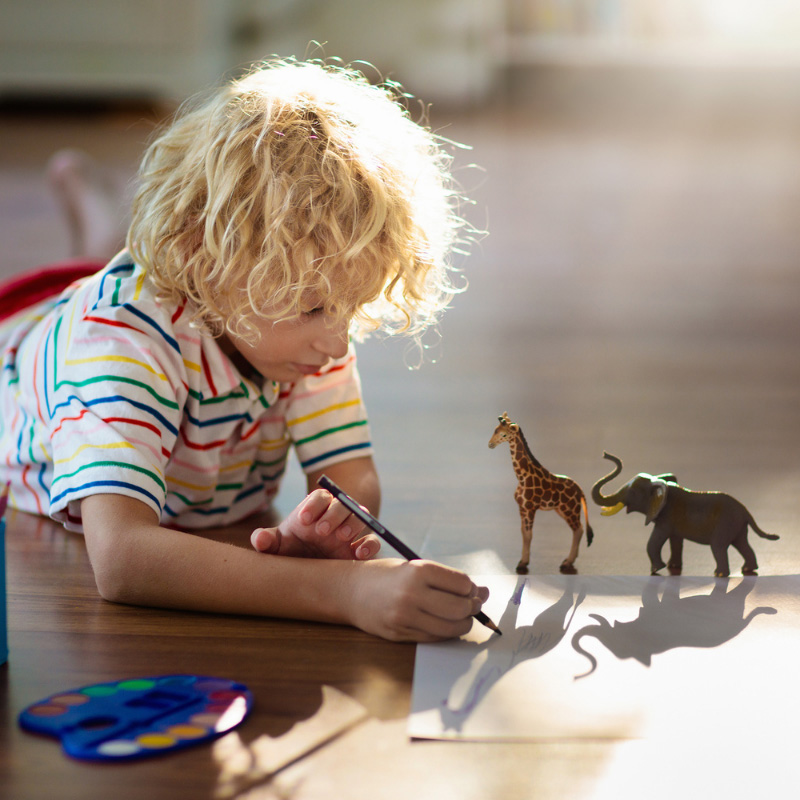
Before you start, however, search your home and find some old dinos and animal toys and toys with interesting shapes, get hold of a flashlight, a few sheets of white art paper, scotch tape, marker pens, paintbrushes and watercolours. You are now ready to get this fun abstract drawing project off the ground.
Tape a sheet of paper to the wall, then on a small stool, prop the tiger toy up so that its shadow will fall on the paper when you shine a light on it. Adjust until the shadow falling on the paper is of the right size. Move it around a bit until you find the optimal position.
Trace the outline of the tiger with a red marker. Then repeat the same with the dino and with other shapes. Trace the shadows of each toy using a different coloured marker pen. Fill the entire paper by shifting the paper around. Then colour in using marker pens, crayons, watercolours…anything goes. Even sprinkling some glitter on the finished work
Basically, this teaches an important lesson through which children can learn about composition and also understand what “less is more” really means.
Magic of grids & patterns
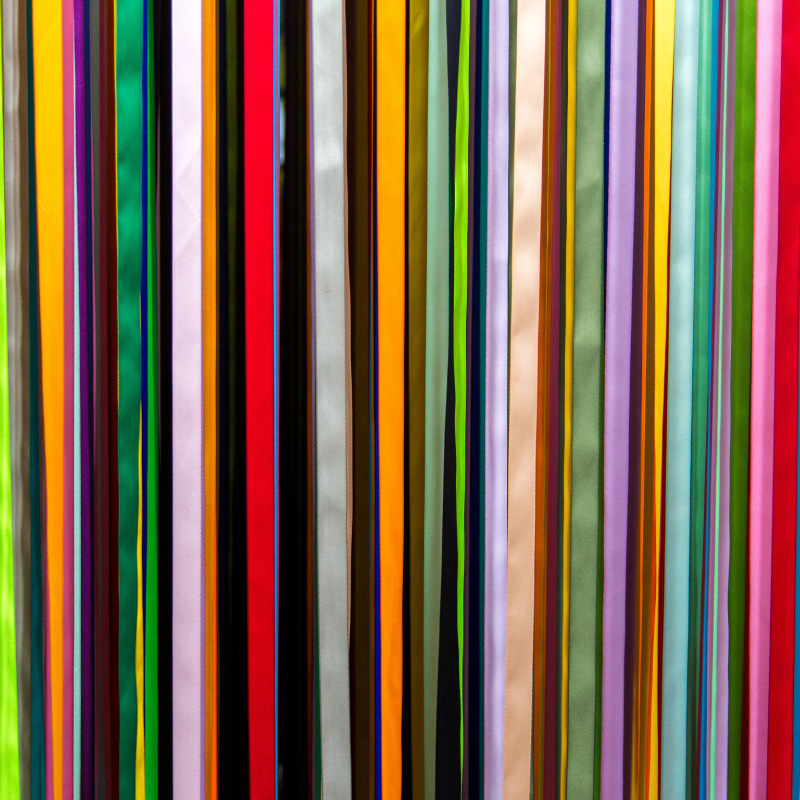
Graphic line illustrations are ideal for getting the creative juices flowing in children who love to doodle. While some will have a ball creating lines and patterns, some others will run out of ideas after the second square.
So the best way to help them is to brainstorm, have fun creating an endless stream of great patterns and discard the lousy ones. Go wild and be as weird as you can get. Nothing needs to be perfect.
You can also teach them how they can use lines and colours effectively. Show them how to create and project a different mood in every section. For instance, by using jagged lines and reds they can create an angry feeling, or when flowing lines are used, they can create a calming effect. Simple and yet so effective.
Their work can be framed and displayed as stand-alone art or can be laminated and used as a special placemat for them. Or better still, use their art as wrapping paper for gifts to their moms and dads!
Other side of the mirror
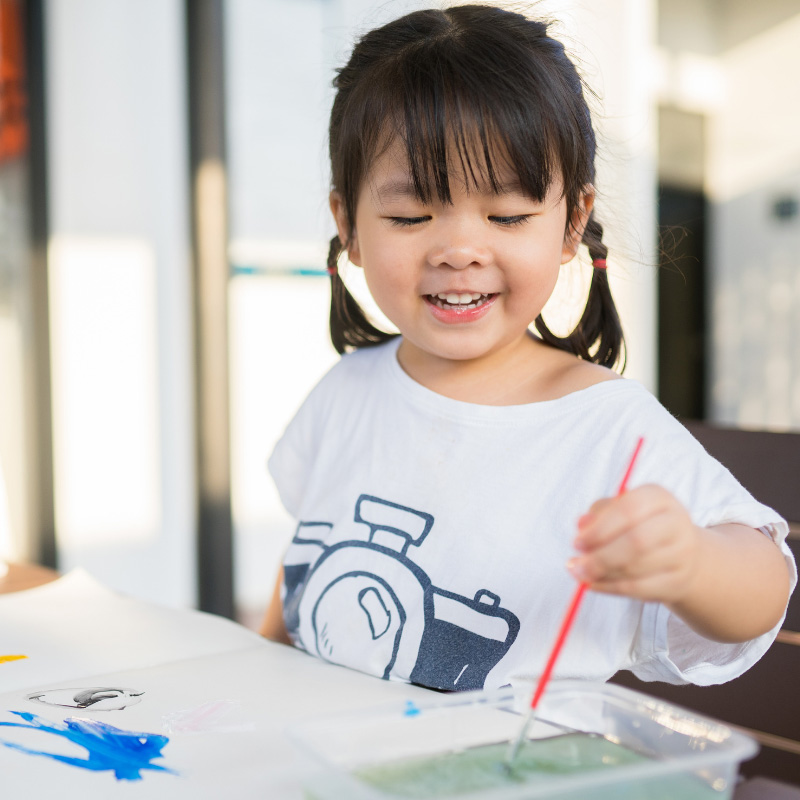
As a parent, the challenge is to find new, and exciting ways to make learning a joy for your child. Especially, like the one you are about to discover. It involves a “trick”. All you need is a mirror, paper and a marker pen.
Divide the sheet of paper into two halves by drawing a line right down the centre of the paper. On one side of this line, draw a simple face, and leave the other half of the paper blank. Hold the mirror in place along the central line with the reflecting side facing the image. Watch the “trick” happen.
When you look straight down the mirror, an exact image of the face will magically appear on the blank side of the paper! Simply trace the reflection onto the paper. Try this out with your child. She will love it!
Make your living room come alive!
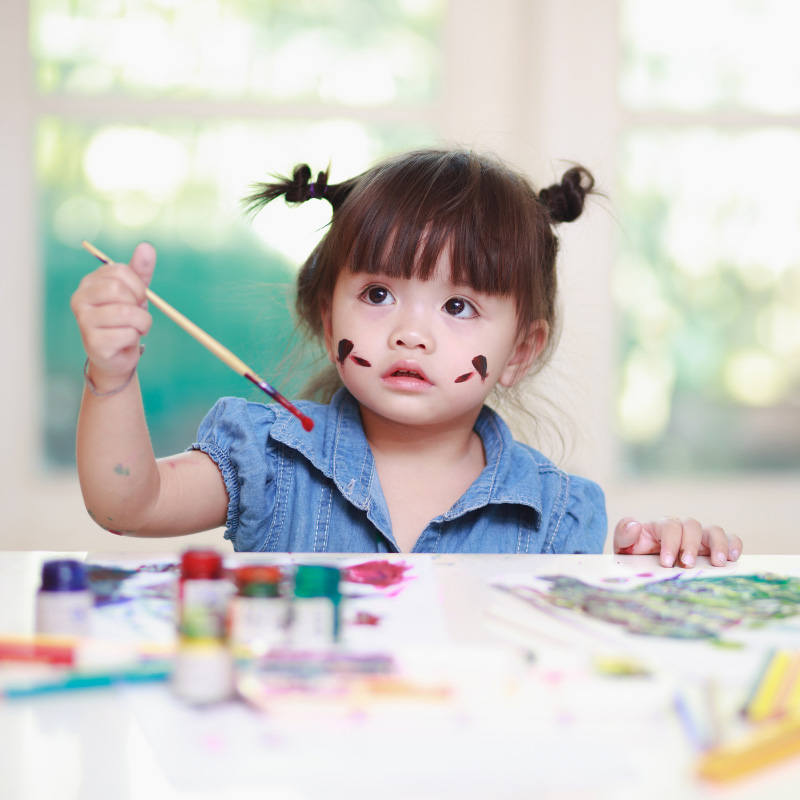
Just like those cave people living in Lascaux Caves in France did, thousands of years ago! But first, show her what cave paintings look like. Depending on the age of your child, you could also talk to her about cave paintings, explaining the why of the subject matter chosen by the cave people. Make her see and understand the importance of those early cave paintings as the first-ever examples of art in history.
All you need by way of art material is large sheets of brown packing paper to be used as a canvas along with a set of pastel crayons. After a discussion of what animals she can draw, your toddler can start immediately by spreading out the sheet of paper on the floor and getting on with her cave masterpiece.
Things can be made even more exciting and interesting if your child is older. She can stick the paper on the underside of the table to give her that feeling and experience of how the cave people painted. Make it a point to join her as well, setting up your canvas next to hers. Do as many cave paintings as you possibly can
Once the paintings are finished, your child can ‘sign’ her work with a stencil of her palm. Add a little colour into the water inside the spray bottle and spray her palm to leave an outline. Then together, start work on the surprise part.
Your challenge is to hold an exhibition of your child’s cave painting masterpieces in the living room! Use all the paintings created, cover the walls and if reachable, even the ceiling. Then send out handmade Cave Painting invites to all your friends and relatives. Inviting them to come after dark and the rule was to bring a flashlight along with them!
On a set day, turn off all the lights. Guest enter a darkened living room. And when they turn their flashlights on, imagine the surprise you will see written on their faces! It will make their jaws drop!
About Abrakadoodle
These are the kind of learning experiences that inspire children to think different, be innovative, and devise ways to discover interesting things found in the real world. Changing the way children learn to use their imagination. Ignite their minds to think, play and learn like never before.
If you like to enrol your child in art classes or participate in an Art Project or workshop, give Abrakadoodle a call. Or better still, make an appointment with the head of a centre near you. Get a hands-on exposure to an experience that will make you see art in a way that adds value to life.
Please note: Abrakadoodle centres are thoroughly sanitized every day — the tables, the chairs, the children’s work stations and everything else the child might touch is made safe and clean. Please wear a mask, wash hands frequently, and practice social distancing.
You may also like
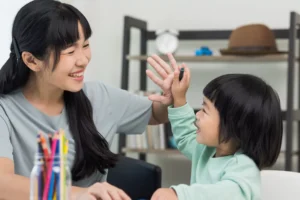
Art Lessons Help Children To Think And Express Themselves Clearly
